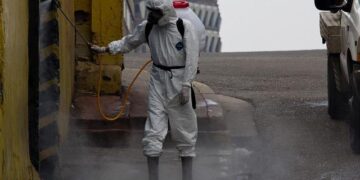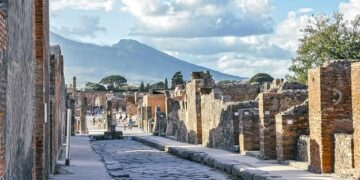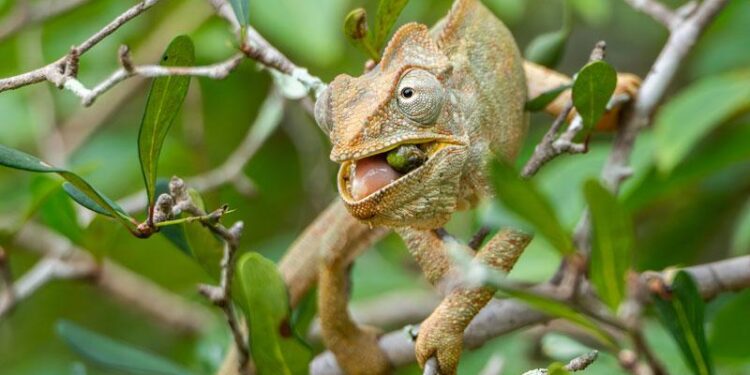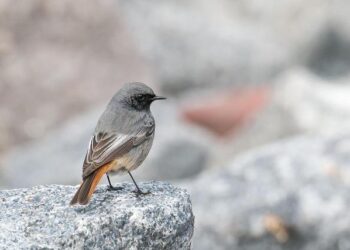In the face of widespread deforestation and ecological decline, Madagascar’s lizards have emerged as unexpected champions in the race to restore the island’s vanishing forests. Recent scientific research reveals that these resilient reptiles play a crucial role in seed dispersal, making them key agents in reforestation efforts. As conservationists grapple with limited resources and mounting environmental challenges, understanding how Madagascar’s lizards contribute to ecosystem recovery offers new hope for preserving the island’s unique biodiversity. This article explores the groundbreaking findings detailed in a recent ScienceDaily report, shedding light on how these often-overlooked creatures are becoming vital allies in Madagascar’s fight to rebuild its forests.
Madagascar’s Lizards Play a Crucial Role in Restoring Island Forests
Madagascar’s native lizards, often overlooked in conservation efforts, have emerged as indispensable architects of the island’s forest recovery. These reptiles serve as key seed dispersers, feeding on a diverse range of fruits and unknowingly transporting seeds across fragmented habitats. Their movements promote the natural regeneration of native trees, particularly in regions where human activity has severely disrupted traditional pollination and dispersal networks. Scientists have documented that several endemic lizard species can disperse seeds more efficiently than some birds, proving crucial to reforestation in isolated pockets of wilderness.
Research highlights the vital connection between lizard behavior and forest dynamics, revealing how these reptiles contribute to biodiversity by:
- Enhancing seed germination rates through digestion processes
- Linking isolated tree populations, thereby improving genetic diversity
- Facilitating the regrowth of key plant species essential for habitat restoration
The following table illustrates the seed dispersal effectiveness of four prominent lizard species compared to local bird populations, showcasing their unexpected ecological importance:
| Species | Average Seeds Dispersed per Day | Seed Germination Increase (%) |
|---|---|---|
| Phelsuma madagascariensis | 45 | 30 |
| Oplurus cuvieri | 38 | 28 |
| Chalarodon madagascariensis | 32 | 25 |
| Leioheterodon madagascariensis | 40 | 27 |
| Local birds (average) | 35 | 20 |
Understanding the Ecological Impact of Lizard-Mediated Seed Dispersal
Across Madagascar’s unique and fragile ecosystems, lizards have emerged as critical players in seed dispersal, a role traditionally dominated by birds and mammals. Recent studies reveal that several native lizard species consume the fruits of endemic trees, subsequently dispersing seeds through their droppings across otherwise barren landscapes. This natural process not only enhances genetic diversity within plant populations but also accelerates forest regeneration in areas impacted by deforestation and climate change.
Scientists emphasize the importance of these reptilian vectors, highlighting their ability to transport seeds over varying distances, often more effectively than larger animals. Key factors contributing to their ecological impact include:
- Diet versatility: Many lizards consume a wide range of native fruits, promoting multiple plant species’ survival.
- Movement patterns: Frequent territory shifts enable broad seed dispersal.
- Seed treatment: Passage through the digestive tract can enhance seed germination rates by weakening seed coats.
| Lizard Species | Preferred Fruit | Average Seed Dispersal Distance | Germination Success Rate |
|---|---|---|---|
| Phelsuma grandis | Tambourissa | 150 meters | 68% |
| Oplurus cuvieri | Ficus | 100 meters | 74% |
| Chalarodon madagascariensis | Syzygium | 75 meters | 61% |
Strategies to Harness Reptile Activity for Effective Reforestation Efforts
Unlocking the potential of Madagascar’s native lizards as key agents in reforestation requires targeted ecological strategies. By analyzing their natural feeding behaviors and movement patterns, conservationists can design habitat corridors that facilitate seed dispersal across fragmented landscapes. Implementing protected zones around critical lizard habitats ensures minimal human interference, allowing populations to thrive and naturally propagate tree species vital for habitat restoration. Moreover, community involvement through citizen science programs has proven effective in monitoring lizard activity, enabling researchers to gather real-time data essential for adaptive management.
Innovative approaches also emphasize leveraging the dietary preferences of these reptiles by promoting growth of specific fruiting plants that produce seeds favored by the lizards. This symbiotic relationship accelerates forest regeneration cycles while maintaining biodiversity. The following table illustrates key plant species identified for their compatibility with lizard seed dispersal, underscoring their role in optimized reforestation plans:
| Plant Species | Seed Dispersal Advantage | Growth Rate |
|---|---|---|
| Tambourissa spp. | High germination post-digestion | Fast |
| Ravenala madagascariensis | Large nutrient-rich seeds | Medium |
| Dypsis spp. | Attracts diverse lizard species | Slow |
- Restore native plant diversity to align with reptile dietary needs
- Develop monitoring systems through GPS tracking and field surveys
- Engage local communities in stewardship and habitat protection
Closing Remarks
As Madagascar grapples with escalating deforestation and ecological decline, its lizards have emerged as unexpected champions in the battle to restore the island’s vanishing forests. This remarkable revelation underscores the intricate connections within Madagascar’s unique ecosystems and highlights the critical role of preserving biodiversity. Moving forward, integrating these reptiles into conservation strategies could prove pivotal in safeguarding the island’s environmental future. Scientists and policymakers alike are now urged to consider these findings as they develop innovative approaches to reforestation and habitat protection on this biologically rich island.






























